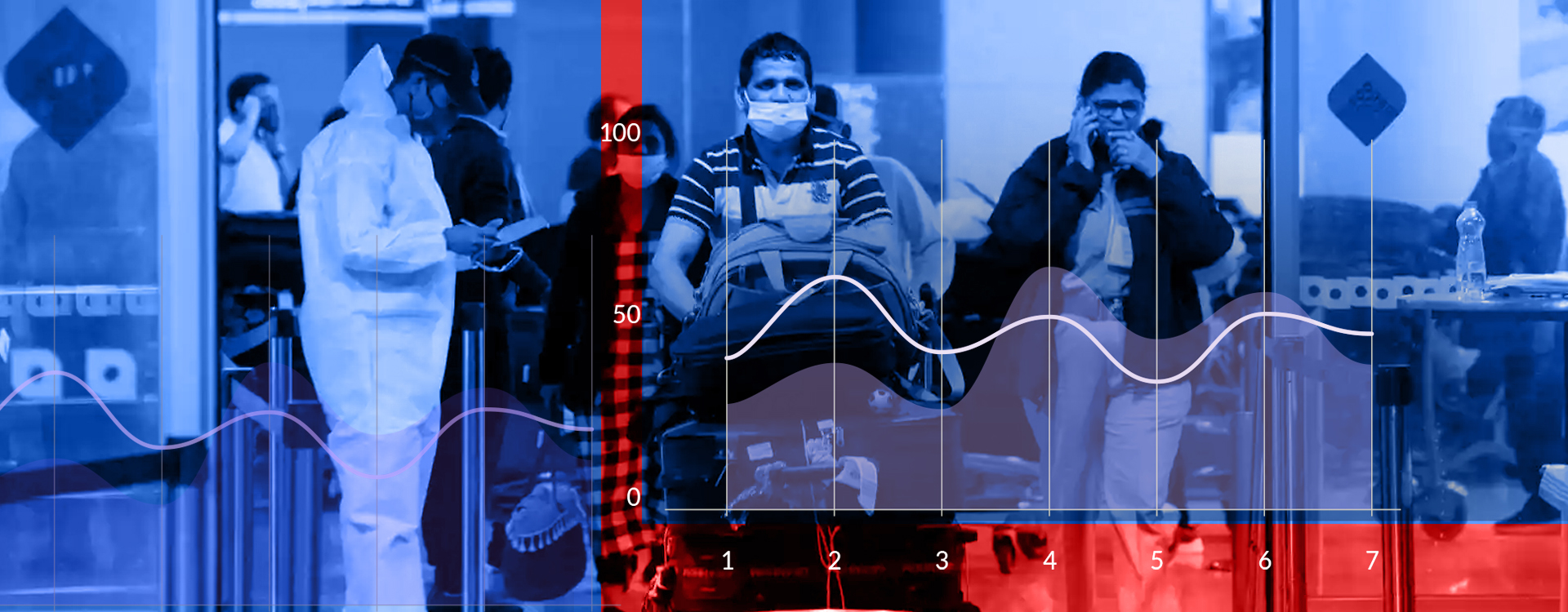India is one of the fastest-growing tourist destinations in the world. The country offers plenty for international and domestic tourists, from beaches to snow-capped mountains and the beautiful culture of various lineages, traditions, and cuisines.
However, since the outbreak of COVID-19, the tourism industry has faced the most difficult and stark challenges. Although the full consequence of the pandemic on the sector’s economy is still unclear, India’s travel and tourism industry was one of the first few industries to be hit. The World Travel & Tourism Council (WTTC) estimates that the COVID crisis will cost the Indian tourism industry at least $2.22 billion.
‘‘
In 2020, experts assume that the Indian tourism industry shrunk by 25%, resulting in 50 million job losses.
People are Willing to Travel Despite COVID
Many people have yearned for soothing trips after subsequent lockdowns and travel restrictions. To satiate their travel desires, mountainous regions away from crowded cities are the first choice for a trip.
The Life in Pandemic report surveyed a sample of more than 800 people and found that by the end of January 2021, 56% of participants had already travelled to someplace or another, and 43% were ready to travel as soon as restrictions are lifted.
The Life in Pandemic survey included people from different professions and students between the ages of 18 to 54 living in tier I and II cities. Of those who have travelled, 82% expressed willingness to travel again. But a sense of maintaining precautions on their own instead of depending on others is prevalent among all.
Travel Revival Will take between Six Months to Two Years
A FICCI-Nelson India report from 2020 stated that the travel and tourism industry would take 6-24 months to recover from the pandemic’s destruction. The report is based on the figures of 248 travel agents and hoteliers in 24 cities in India. It stressed the need for fundamental government support, including policies and financial support, to deal with industry tensions exacerbated by COVID-induced lockdowns.
Business for travel companies and agencies has also declined sharply due to technology and digital platforms replacing the traditional channels of travel planning. Research by FICCI and Nelson India suggests that the government needs to partner with the industry to boost a digital shift and get them acquainted with the latest technologies. This will build confidence in businesses, and the Indian tourism products will actively function as businesses revive.
Millennials are a Key Demographic in Reviving India’s Travel Sector
Given their appetite for travel and adventure, millennials are likely to be the main drivers of India’s travel sector’s recovery after the pandemic. According to Business of Travel Trade (BOTT) Travel Sentiment Tracker, a survey conducted in September 2020 showed that 71% of those polled said once the government travel lifted restrictions, they would willingly explore India’s tourism hubs.
The online survey, conducted in September 2020 and covering over 6,000 millennials, showed that millennials also have numerous travel destinations on their lists to spend their vacations. In addition, around 41% of those surveyed said they would like to spend Rs 1-2 lakh on their holidays, followed by 30 percent of them who have a budget of Rs 50,000-Rs 1 lakh. Such figures indicate a promising revival strategy for the sector soon.
Government Efforts in Reviving the Travel Industry
Along with a range of Central government’s efforts, most primarily the ‘Dekho Apna Desh’ campaign, numerous states are also working towards a move to normalcy. The Uttar Pradesh government has recently opened the state’s most iconic tourism hub – the Taj Mahal – on June 16 after a two-month gap. Such moves will help the distressed business, and people’s livelihoods depend directly on the travel and tourism sector.
How can Businesses Take Advantage of People’s Growing Urges to Travel?
With the ongoing vaccination drive, Indians have gained confidence, expressing an inclination to travel for various purposes, including visits to relatives, vacations, or travelling for work at destinations with a low impact of COVID-19. This indicates a rebound in the travel segment, although domestic, which is inching towards pre-COVID stages.
Businesses of all scales in the travel industry need to prepare themselves in a renewed way to give comfort and safety to customers. Most importantly, to gain traction in their business, be it a transport service or long-range cab provider, hygiene promotion is key. Businesses must give destination level hygiene and adhere to safety assessment processes. Small companies operating in this segment must also focus on using digital tools and expanding social media outreach to reach more customers.
Eventually, travel will resume as mass vaccination drives immunise a majority of Indians. The industry needs to be prepared to cater to the demands of people and brace their revival process.




